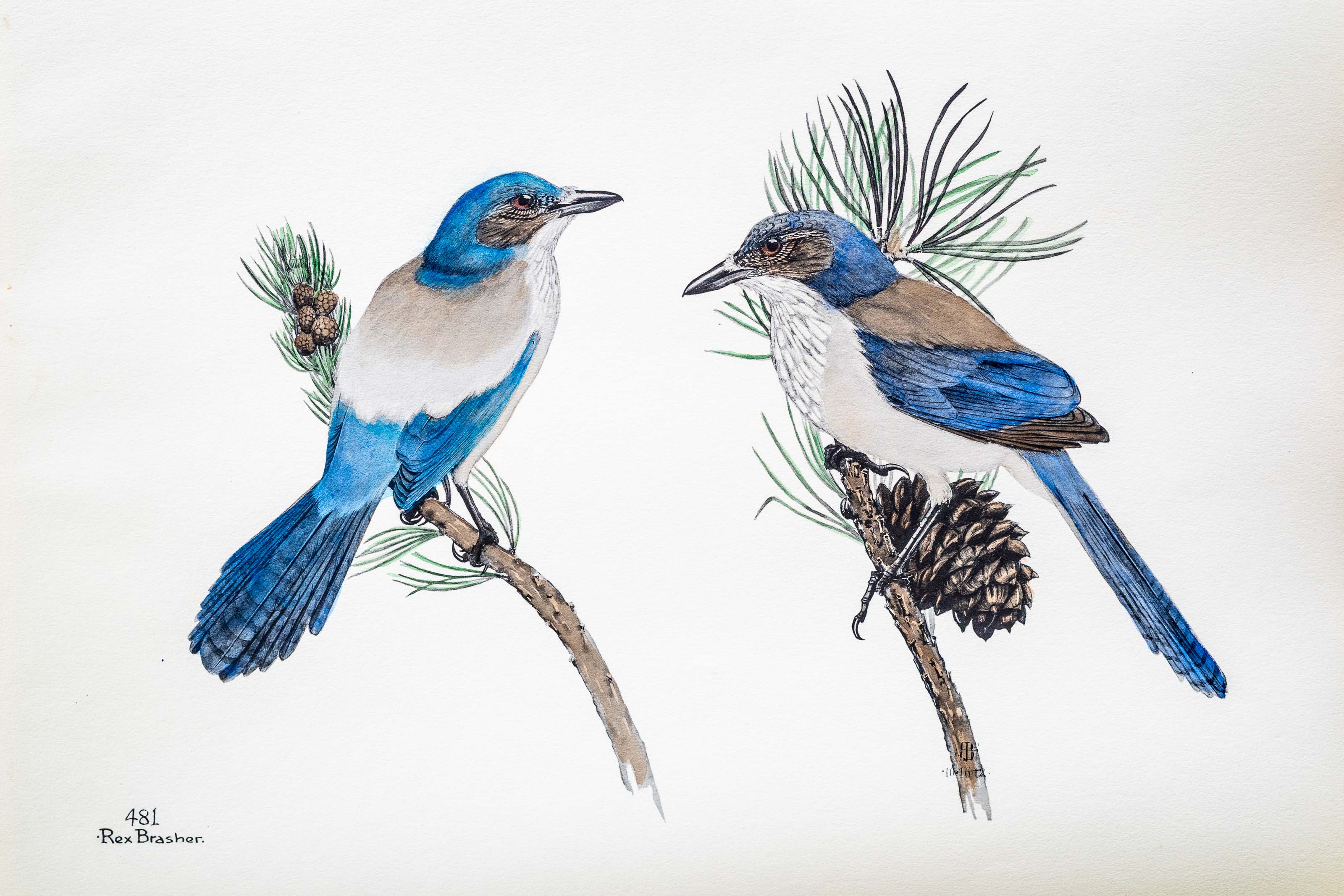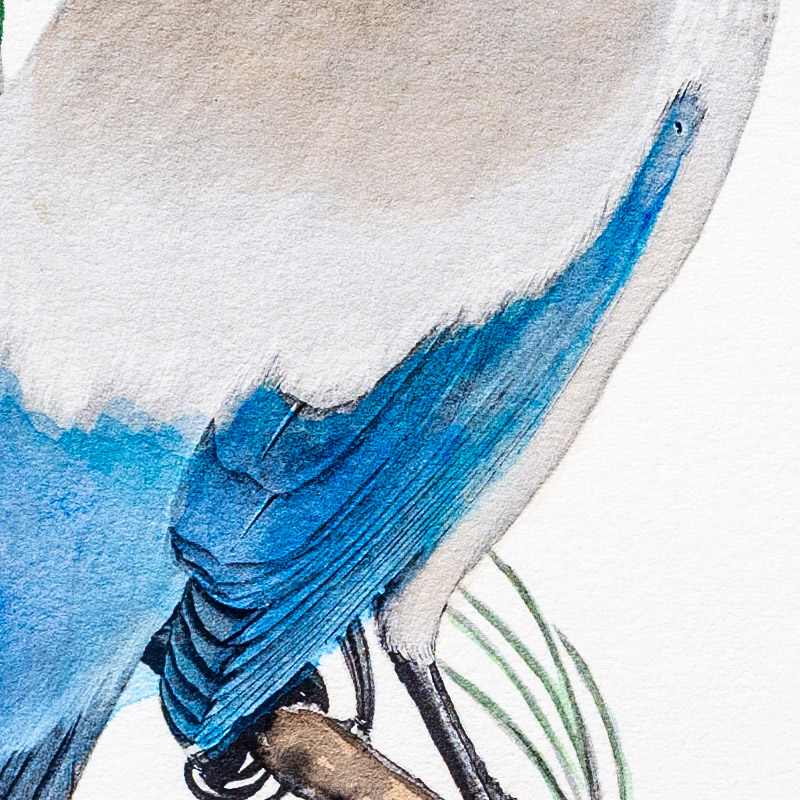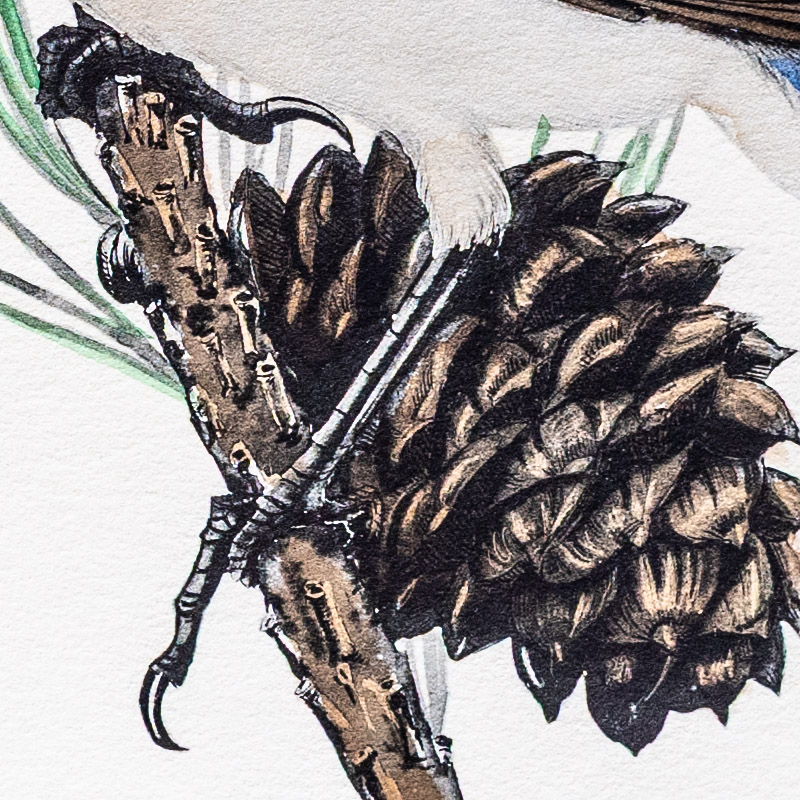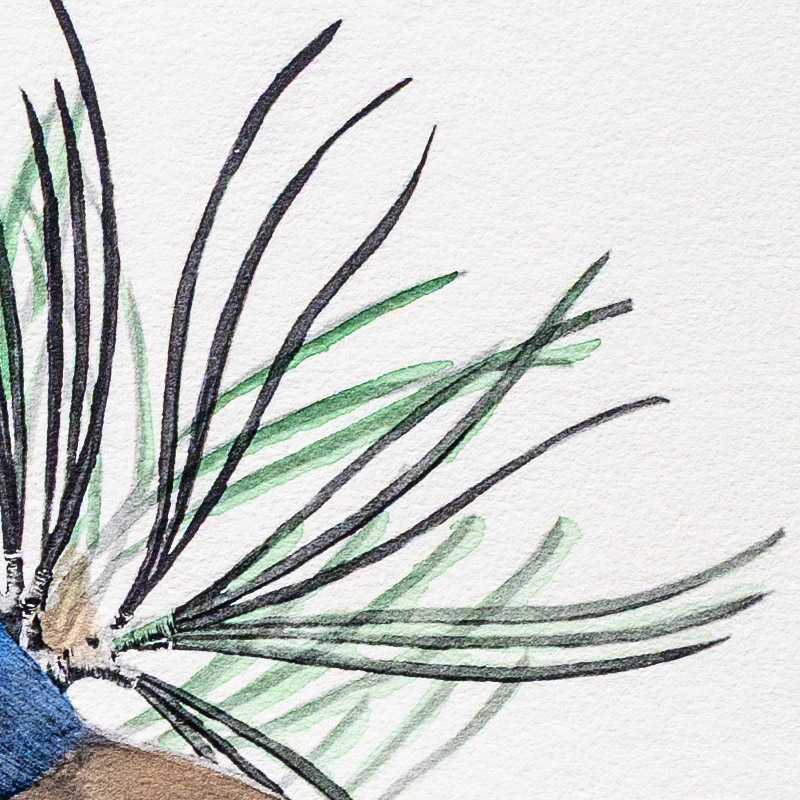




1912
1931
8
481
A team of dedicated board members, volunteers, and student interns has published every page in Volume 9. This volume includes 360 images of paintings and lyrical descriptions of birds, now available online for everyone to enjoy anywhere in the world. This is a monumental task. Each volume requires approximately 400 hours to photograph, edit, transcribe, catalog, and publish online. We need your support to complete this work.
If you're tech-savvy, have a good eye, are meticulous with details, and love structured data, please consider volunteering by emailing us at hello@rexbrasher.org.
We encourage all bird lovers and supporters to consider a monetary donation to support our mission to make Rex's work available for everyone. You can provide a one-time or recurring donation online.
Some naturalists consider CALIFORNIA JAY the least harmful, while other observers report an excess of bad habits. Like many birds, Jays have individual bandits who give a bad name to the genus — wherein they do not differ from men.
California Jays seem to have similar family traits, particularly that of silence when nesting and gathering in loquacious bands after the young are reared.
NEST: in low scrub, a bulky collection of twigs, grass and moss with fine inner lining.
EGGS: 3–6; dark green or buffy, thickly splotched with chestnut, brown and lilac.
Pacific coast of United States from southwestern Washington south to San Bernardino Mountains, California. East to Sierra Nevada and Cascade ranges.
A tree rarely 50 feet high, often forming timber line on western mountains north of 53 degrees.